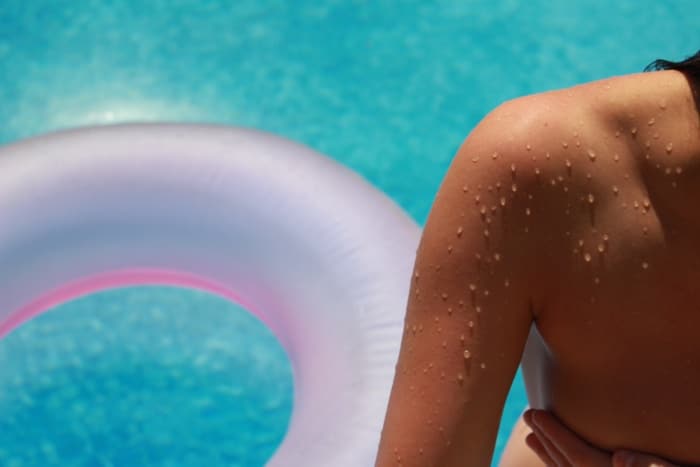
If you’ve ever doubted that what you put on your skin can be absorbed into your bloodstream, here’s more evidence for you.
According to a recent study published in the journal JAMA Network, ingredients from sunscreen products are absorbed by the skin at higher levels than those currently allowed by federal safety regulations.
What does that mean for your health?
Chemical Sunscreens Absorbed at Higher Than Safe Levels
The U.S. Food and Drug Administration (FDA) has established a limit for sunscreen ingredients, stating that their absorption into a person’s system should be no higher than 0.5 ng/mL. That is the level they’ve determined is safe for human health.
For the study, scientists wanted to see if sunscreen products were matching that standard. They tested the active ingredients in four commercially available sunscreen products:
- Avobenzone
- Oxybenzone
- Octocrylene
- Ecamsule
Note that these are all “chemical” sunscreens—those that work by altering UV rays into heat, then releasing that heat from the skin. They spread more easily on the skin and tend to disappear quickly, but they have been linked with health risks in the past.
Researchers recruited 24 healthy volunteers. Each one applied one of the four sunscreens to 75 percent of their body 4 times a day for 4 days. The four sunscreens were:
- Spray 1
- Spray 2
- Lotion
- Cream
Scientists collected blood samples from each person at various times throughout the study and analyzed them.
Results showed:
- All four ingredients were absorbed into the blood at levels greater than 0.5 mg/ML of blood, which is higher than the safety standard.
- For avobenzone, the blood concentrations were 4.0 ng/mL with the first spray sunscreen, 3.4 ng/mL with the second spray sunscreen, 4.3 ng/mL for the third lotion sunscreen, and 1.8 ng/Ml for the fourth cream sunscreen.
- For oxybenzone, levels were 50-100 times higher: 209.6 ng/mL for the first spray sunscreen, 194.9 ng/mL for the second spray sunscreen, and 169.3 ng/mL for the third lotion sunscreen.
- For octocrylene, levels ranged from 2.9 ng/mL to 7.8 ng/mL.
- For ecamsule, levels were 1.5 ng/mL for the cream.
The researchers added that all of the unsafe levels were reached after just one day of sunscreen use, and that blood levels remained high in the body for at least 24 hours after use was discontinued. They concluded that more research is needed to determine the significance of these findings.
Use a Safe Sunscreen to Protect Your Skin
What do these findings mean for us?
We’ve long recommended that the best sunscreens for skin protection and safety are zinc oxide and titanium dioxide. These are called “mineral” or “physical” sunscreens (as opposed to chemical ones) because they contain active mineral ingredients and because they work by physically blocking damaging UV rays from sinking into the skin. They deflect and scatter UV rays, rather than absorbing them and then releasing the heat.
That reflecting property makes these sunscreens safer—they’re less likely to absorb into the skin—and broadly protective against both UVA and UVB rays. They’re also less likely to irritate sensitive skin, and are better for those with acne-prone skin, as they’re less likely to clog pores.
These sunscreens can rub off more easily, however, so it’s important to reapply frequently when outdoors. They also can be more visible than chemical sunscreens, showing up as a white-ish cast on the skin.
We also recommend staying out of the intense sun between the hours of 10:00 a.m. and 2:00 p.m., and making healthy use of hats, umbrellas, clothing, and trees to protect yourself.
The FDA has proposed new regulations on sunscreens to help improve safety, but it will be a while before these come into effect. In the meantime, protect yourself and your family by choosing safe sunscreen options.
You can refer to the Environmental Working Group’s (EWG’s) 2019 Guide to Sunscreens for help in finding the best sunscreen for you.
Do you use safe sunscreen?
Source
Matta, M. K., Zusterzeel, R., Pilli, N. R., Patel, V., Volpe, D. A., Florian, J., … Strauss, D. G. (2019). Effect of Sunscreen Application Under Maximal Use Conditions on Plasma Concentration of Sunscreen Active Ingredients. JAMA, 321(21), 2082-2091. doi:10.1001/jama.2019.5586

